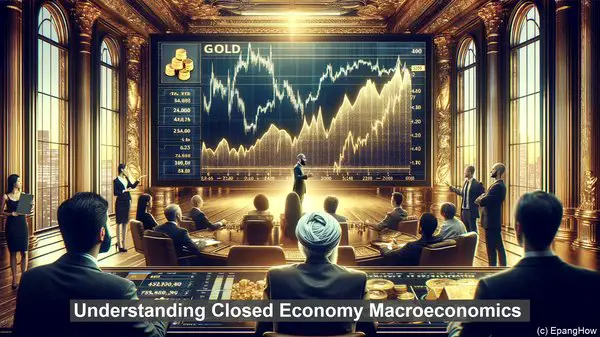Introduction: The Two Sides of Macroeconomics
Hello everyone! Welcome to this article where we’ll delve into the fascinating world of macroeconomics. Today, we’ll be focusing on the contrasting dynamics of open and closed economies, and how they shape the global economic landscape.

Defining Open Economy Macroeconomics
To start, let’s define what an open economy is. In simple terms, it refers to a country that engages in international trade and has significant interactions with other nations. In this context, open economy macroeconomics analyzes how these interactions, such as imports, exports, and capital flows, impact a nation’s overall economic performance.
Understanding Closed Economy Macroeconomics
On the other hand, a closed economy is one that operates in isolation from the global market. It neither imports nor exports goods or services on a significant scale. Closed economy macroeconomics, therefore, focuses on the internal dynamics of such an economy, without considering the influences of international trade.
The Role of International Trade
One of the fundamental differences between open and closed economies lies in their approach to international trade. In an open economy, international trade is a vital component, as it allows for the exchange of goods and services, leading to specialization and increased efficiency. Closed economies, however, rely primarily on domestic production and consumption, limiting their exposure to global market fluctuations.

Implications for Economic Policies
The distinction between open and closed economies also has significant implications for economic policies. In an open economy, policies related to tariffs, quotas, and exchange rates become crucial, as they directly impact the flow of goods, services, and capital. Closed economies, on the other hand, have more control over their internal policies, as they are not as reliant on external factors.
Exchange Rates and Capital Flows
Exchange rates play a pivotal role in open economy macroeconomics. They determine the value of a country’s currency in relation to other currencies, influencing the cost of imports and exports. Additionally, open economies often experience substantial capital flows, as investors seek opportunities in different markets. These capital flows can have both positive and negative effects, depending on the circumstances.
Global Economic Shocks
Open economies are more susceptible to global economic shocks. For example, a financial crisis in one country can quickly spread to others through interconnected markets. Closed economies, with their limited exposure to international trade, may be more insulated from such shocks. However, they can still be affected indirectly, as global economic events have ripple effects.
